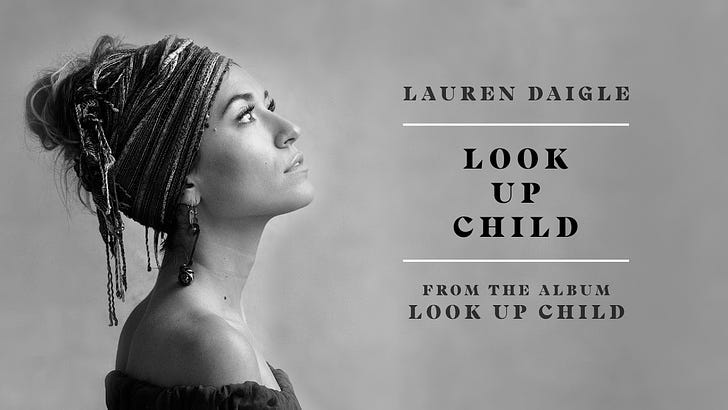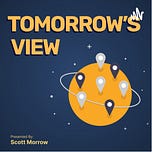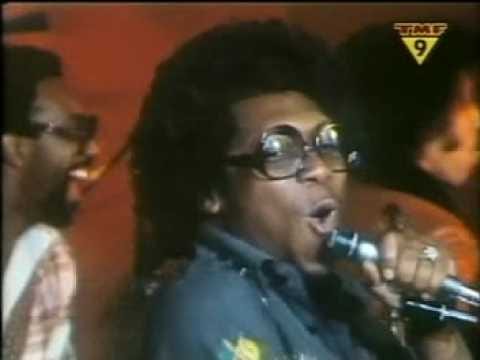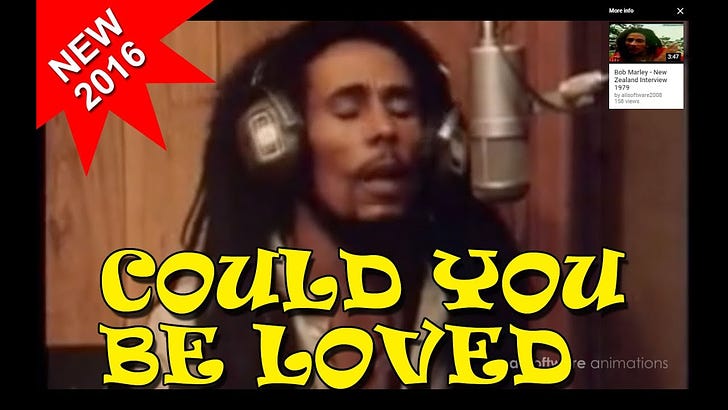As they say, it's been a while. I appreciate the queries about the newsletter and the "when are you going to write again" comments. My absence is a combination of being busy with my coaching practice, personal travel, and football season (Go Vols)! I have no idea how much I will publish in 2022, but I hope to continue to do so when inspired.
Speaking of inspiration, I recorded a podcast a few months ago with one of my coaching clients, Harry Allen. Harry truly inspires me. Intelligent, compassionate, high integrity, and a solid character are just a few words describing Harry. I will leave the rest of his fascinating story to unfold on the embedded podcast, so please take a listen.
The James Webb Space Telescope
I want to highlight one of the most outstanding human achievements in the making that will occur tomorrow (potentially)! The James Webb Space Telescope (JWST), named in honor of a former NASA administrator, launches the biggest mirror ever to fly in space tomorrow morning on Xmas Day at 7:20 am Eastern Time. This video looks into the history of the project and critical facts. The JWST is the long-awaited successor to the $1.5 billion Hubble Space Telescope, named after astronomer Edwin Powell Hubble, who discovered in the 1920s that the universe is not static. In other words, the universe's expansion was not slowing due to gravity, but instead, inexplicably was accelerating. The unknown force driving this accelerating expansion is dark energy, and it remains one of the greatest mysteries in science—more on that revelation and the implications below.
Tomorrow's JWST launch is a 25-year collaboration between hundreds of scientists and engineers at NASA, the European Space Agency, and the Canadian Space Agency, costing $10 billion. The launch has been delayed for a decade due to costly mistakes and challenging technical issues. Unlike the Hubble Space Telescope, which was repaired post-launch in space, there is no prospect of any human or robotic intervention or rescue should something go wrong. JWST will be sent nearly a million miles from home to a point where it will take minimal fuel to counteract the gravitational pull of the sun and Earth and where the shield will be able to block their light effectively. (For comparison, the Moon is 238,855 miles away from Earth; Mars is 222 million miles from Earth; Scientists estimate that the edge of the solar system is about 9 billion miles from the sun.)
The JWST has 344 "single points of failure" to unfurl its big golden mirror and deploy five thin layers of a giant plastic sunscreen that will keep the telescope and its instruments in the cold and dark. One mistake and a $10 billion investment and 25 years of work go down the toilet. When the Hubble Space Telescope launched, a testing error led to a distorted lens which was a single millimeter off and produced an out-of-focus image. NASA had to schedule a repair mission that sent astronauts in the space shuttle Endeavor to repair the telescope manually. Since JWST will be launched a million miles into space, there will be no second chances. How's that for pressure!
The Launch
JWST will launch from Europe's Spaceport in Kourou, French Guiana, on the northeastern coast of South America. (It is beneficial for launch sites to be located near the equator, so the spin of the Earth--roughly 1,000 mph at the center--can help give an additional push.) JWST will hitch a ride on an Ariane 5 rocket, a tried-and-true vehicle with a streak of 82 consecutive successful launches between April 2003 and December 2017. The Ariane 5 is part of the European Space Agency's contribution to the mission. Following the launch, the telescope will require about a month to travel to L2, the second Lagrangian point, located at some four times the Moon's distance. The telescope will unfold in space. A gold-coated segmented mirror of 18 hexagons will span 21 feet in total. A five-layer, diamond-shaped sun shield will unfurl to the size of a tennis court to block out excess light that might hinder the search for exoplanets and other faint cosmic objects. This video shows the deployment procedure, timeline, and satellite location during deployment. Like Matt Damon in the movie, The Martian, many brilliant people are going to have to science this shit out of this for JSWT to work.
The Mission
Astronomers expect that JWST's five-year mission will pierce a dark curtain of ignorance and supposition about the early days of the universe and allow them to snoop on nearby exoplanets. They'll also probe some of the first galaxies to form in the early universe, which humans have never seen before. JWST will beam hundreds of gigabytes of data back to scientists on Earth every day. It will be in continual communication through the Deep Space Network, an international array of giant antennas managed by NASA's Jet Propulsion Laboratory.
Scientists will try to use the telescope to solve one of the strangest puzzles of the cosmos, the fact that no one can pin down the rate at which the universe is exploding outward. Other astronomers will use JWST to probe the early universe and detect thousands of galaxies within a few hundred million years after the Big Bang. They hope to spot the first stars and galaxies emerging from the primordial fog when the universe was only 100 million years old and the first steps out of the big bang toward the cozy light we inhabit today. Search for the origins of supermassive black holes is also on the mission list.
Big Bang Theory
Let me caveat this section by emphasizing this is not a religious statement of any kind. People reading this newsletter hold a variety of beliefs, and I respect each of them. The timing of this post, the day before the most important date on the Christian calendar, is merely coincidental. Therefore, please read this section in the spirit it is intended—absent any religious POV.
The Big Bang Theory is scientists' best guess of how the universe began. (Less popular alternate theories include the Steady State Theory and the Oscillating Theory.) However, despite its name, the Big Bang did not occur as an explosion in the usual way one thinks about such things. An explosion implies that something exploded, or expanded, from one center point outward into space. The Big Bang theory suggests that space itself expanded. Instead of a center from which everything grew, scientists think space is increasing everywhere, in all directions, equally. Though to some, whether there was an explosion or not is just semantics. To fully understand what happened at the universe's origin, scientists think we need a better physics theory that can incorporate our current description of the very small (general relativity). But one thing the scientific community is in agreement on is that the universe began extremely hot and extremely dense. Around14 billion years ago, space itself expanded and cooled down, eventually allowing atoms to form and clump together to build the stars and galaxies we see today.
As you might imagine, this topic is a rabbit hole that can quickly spiral into ridiculously technical and complex issues to understand and explain. Plus, I'm not an astrophysicist (stop the laughter), so I will summarize the critical points of the Big Bang theory as follows:
Roughly 13.8 billion years ago, all matter was compacted into a tiny ball with infinite density, and intense heat called a Singularity. When the universe started, it experienced an incredible burst of expansion known as inflation, in which space itself expanded faster than the speed of light. During this period, the universe doubled at least 90 times, going from subatomic-sized to golf-ball-sized almost instantaneously. One second after the Big Bang, the universe was filled with neutrons, protons, electrons, anti-electrons, photons, and neutrinos.
For the first 380,000 years or so, the universe was essentially too hot for light to shine, according to France's National Center of Space Research (Centre National d'Etudes Spatiales, or CNES).
Roughly 380,000 years after the Big Bang, matter cooled enough for atoms to form during the era of recombination, resulting in a transparent, electrically neutral gas, according to NASA. This action set loose the initial flash of light, and the universe was plunged into darkness since no stars or other bright objects had formed yet.
About 400 million years after the Big Bang, the universe emerged from the cosmic dark ages.
According to NASA, the universe's expansion gradually slowed down as the matter in the universe pulled on itself via gravity, about 5 or 6 billion years after the Big Bang. A mysterious force now called dark energy began speeding up the expansion of the universe again, a phenomenon that continues today.
A little after 9 billion years after the Big Bang, our solar system was born. (The sun is by far the largest object in our solar system, containing 99.8% of the solar system's mass. It sheds most of the heat and light that makes life possible on Earth and possibly elsewhere.)
The universe is currently estimated at roughly 13.8 billion years old, give or take 130 million years. In comparison, the solar system is only about 4.6 billion years old. (While our ancestors have been around for about six million years, the modern form of humans only evolved about 200,000 years ago. Civilization as we know it is only about 6,000 years old, and industrialization started in earnest only in the 1800s.) How is that for some perspective about the importance of your life?!
There are two main ways for an expanding universe to die: The cosmos could eventually collapse back in on itself, called the Big Crunch, or it could continue inflating forever, resulting in the Big Freeze. To find out which is correct, astronomers had to fast-forward the universe's evolution. Recent studies suggest the Big Freeze is more likely due to the expectation-defying discovery of dark energy showed it was improbable the universe would collapse in a Big Crunch. Even with all the matter in the universe tugging inward, gravity will never be strong enough to overcome the inflating effect of dark energy. In other words, our ballooning universe is likely destined for a Big Freeze.
Two things we don’t know: 1) what caused the initial expansion or “Big Bang" that created our Universe? and 2) what is our Universe expanding to?
Conclusions
My key takeaway from this post is humility. If you think life isn't short, consider the span of human history compared against the universe's age. And given the average life expectancy in the US is 78.9 years (76.3 for men; 81.4 for women), our lives are less than a blink in the history of time. So, Carpe Diem, my friends!
My other takeaway is awe, as I marvel at the human achievement and intellect driving scientific discovery related to this topic. But at the same time, we must recognize how little we know. A century ago, astronomers thought that our Milky Way Galaxy was the entire universe! Our cosmos appeared static — it had always been, and would always remain, roughly the same. However, as Albert Einstein formulated his theories of relativity, he noticed signs of something strange. His equations implied a universe in motion, either expanding or contracting. In 1927, an astronomer named Georges Lemaître suggested that the universe started as a single point and began to expand in an accelerating fashion. The universe's growth was confirmed observationally in the 1990s with the Hubble Space Telescope.
Since the 1920s, astronomers have hypothesized that the universe contains more matter than seen by the naked eye. Research now confirms that atoms only make up 4.6 percent of the universe. Of the remainder, 23 percent is made up of dark matter, which is likely composed of one or more subatomic particles that interact very weakly with ordinary matter, and 72 percent is made of dark energy, which is driving the accelerating expansion of the universe. In other words, most of the universe is made up of things that we can't see and don't understand. Mind blown.
In closing, I want to wish everyone a Merry Xmas and a happy holiday season! And I encourage you to pause from opening gifts tomorrow and look up, child, and tune in at 7:20 am Eastern Time and watch the launch of JWST. The success of this mission is likely to change our understanding of the universe and our role in it.
Name that Tune!
I am listening to “Look Up Child” by Lauren Daigle because it’s Harry Allen’s favorite song.
Lauren Ashley Daigle is an American contemporary Christian music singer and songwriter. After being signed to the label Centricity Music, she released her debut album, How Can It Be, in 2015. Look Up Child is Daigle’s third studio album. It was released on September 7, 2018, through Centricity Music. The album received the Grammy Award for Best Contemporary Christian Music Album at the 2019 Grammy Awards.









Share this post